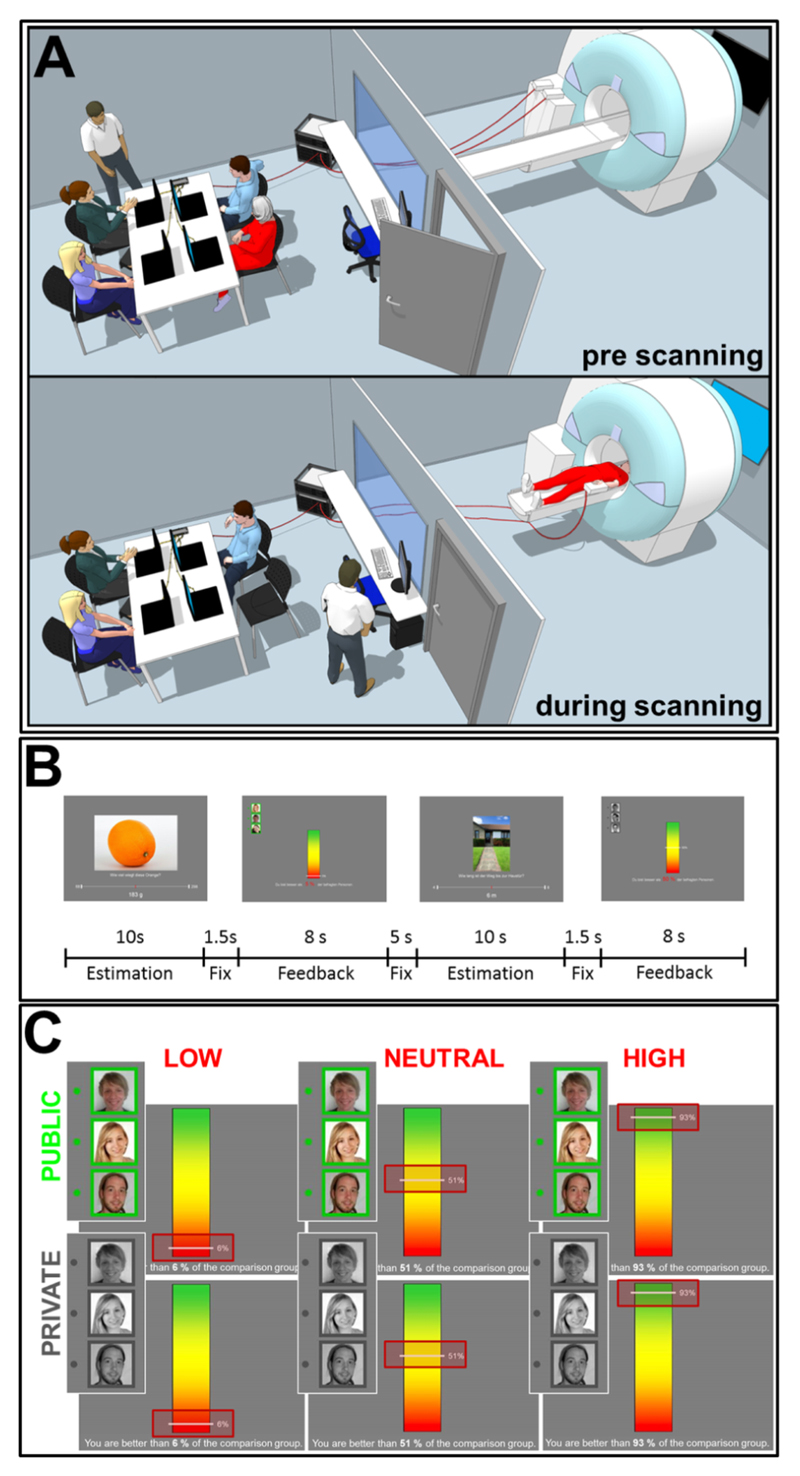Figure 1.
Experimental set-up and design. A Set-up of the fMRI experiment. During the pre-scanning phase (upper picture), the participant (red clothes) and the three confederates practice the cognitive estimation task while sitting in front of their notebooks in the preparation room adjacent to the scanner room. During scanning (lower picture), the participant lies in the MRI believing that the three confederates are completing the same task in the preparation room and are able to follow his/her performance on their notebook screens via cable connections. B Timing of the fMRI paradigm. Estimation questions are presented for 10 s followed by a fixation cross presented for 1.5 s and the feedback presented for 8 s. After an intertrial interval of 5 s, the next trial starts. C Design of the fMRI paradigm. There are six different conditions resulting from the PERFORMANCE (3) x PUBLICITY (2) levels. PERFORMANCE is either LOW, mediocre (NEUTRAL) or HIGH and is indicated by a line marking the exact percent value of the relative estimation performance (red frames). Half of the feedback is made PUBLIC and visible to the audience (green frames) and the other half is PRIVATE and only visible to the participant him- or herself (gray frames). For further details see also Movie A. 1.

